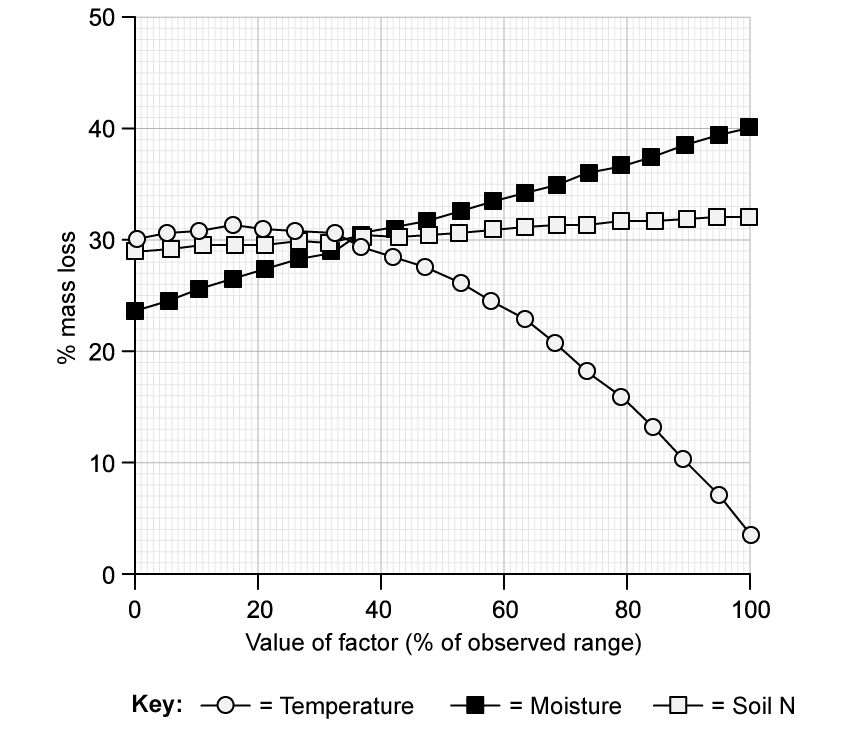Different ecosystems have different levels of productivity due to differences in the abiotic and biotic factors in the environment.
The cycling of nutrients in an ecosystem determines the nutrients available to plants for growth and therefore has a direct impact on the net primary productivity (NPP) of that ecosystem.
The table shows the decomposition cycles of 6 different vital nutrients across three different biomes, as well as the NPP for each biome.
Note that a decomposition cycle is the number of years it takes for a nutrient in dead organic matter to be made available again to plants
Time needed for 1 cycle of decomposition/years | |||||||
|---|---|---|---|---|---|---|---|
C | P | N | K | Ca | Mg | NPP G C m-2 yr-1 | |
Boreal Forest | 146.0 | 143.0 | 100.5 | 37.5 | 56.0 | 197 | 140 |
Mediterranean Forest | 3.5 | 4.7 | 4.9 | 1.4 | 2.5 | 3.7 | 600 |
Tropical Forest | 0.3 | 2.1 | 1.8 | 0.9 | 1.1 | 0.9 | 2200 |
Identify the biome that shows the slowest rate of decomposition.
Suggest a biotic factor which may impact decomposition rates in an ecosystem.
List two carbon-containing compounds found in plants.
Describe the relationship between net primary productivity (NPP) and decomposition rate for the three biomes.
A study was conducted to establish the relationship between different abiotic factors and the rate of decomposition in a Mediterranean Forest ecosystem.
The data can be seen in the graph below.

Identify the abiotic factor that produced the biggest change in the rate of decomposition.
Describe the effects of the different abiotic factors on decomposition.
Explain the effect of temperature on decomposition rate.
Using the data provided, deduce why tropical forests have the highest rate of productivity of the 3 biomes studied.
Did this page help you?